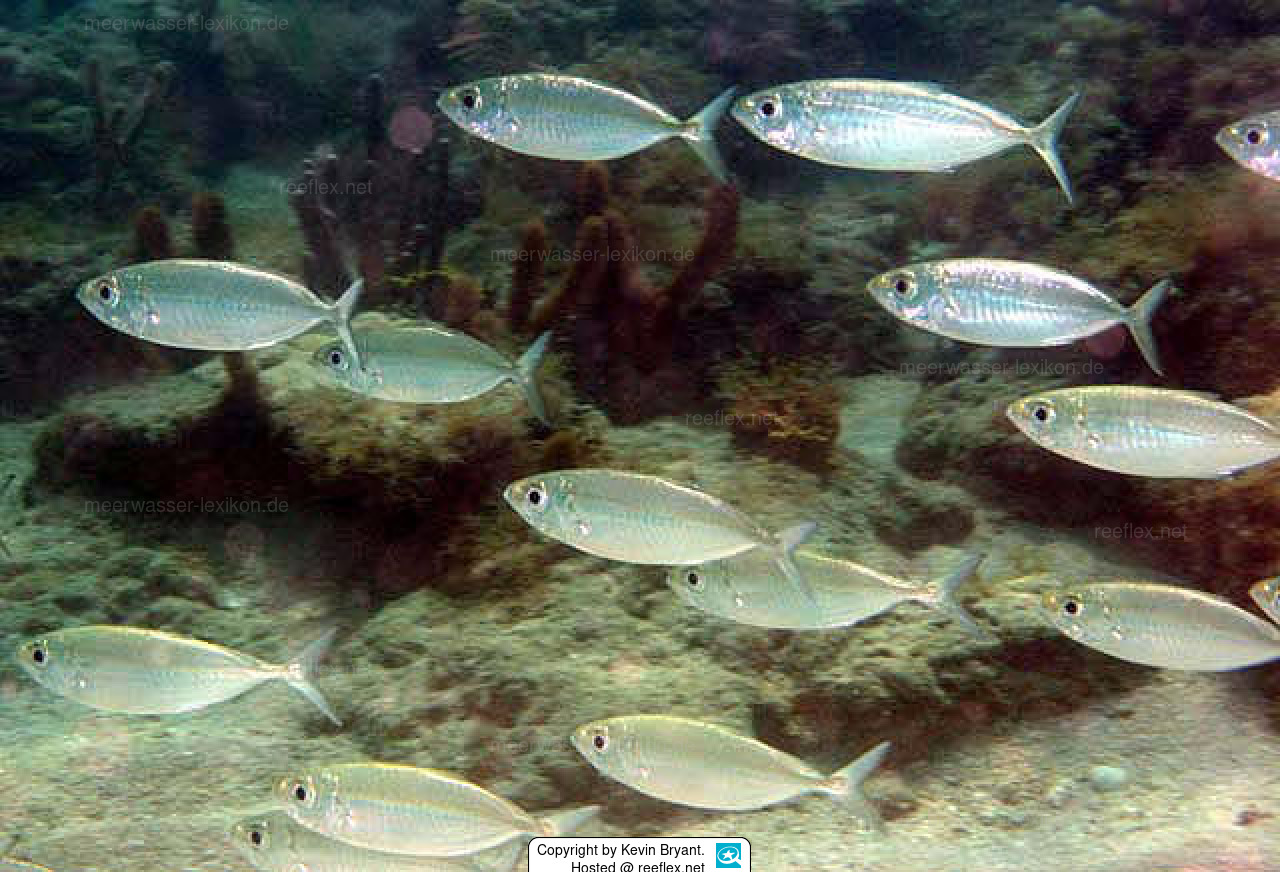Info
(Bloch, 1793)
Distribution:
Circumtropical.
Indo-Pacific: East Africa to Rapa, north to southern Japan and the Hawaiiian Islands, south to New Caledonia.
Eastern Pacific: Mexico to Peru, including the Galapagos Islands.
Western Atlantic: Nova Scotia, Canada and Bermuda through the Gulf of Mexico and the Caribbean to to São Paulo, Brazil.
Eastern Atlantic: Cape Verde to southern Angola.
Biology:
Prefers clear oceanic waters around islands to neritic waters.
Occasionally in turbid waters. Mainly nocturnal. Feeds on small shrimps, benthic invertebrates, and forams when inshore, and zooplankton and fish larvae when offshore.
Travels in compact groups of hundreds of thousands of fish.
Reports of ciguatera poisoning
Synonymised taxa:
Caranx blochii Cuvier, 1833
Caranx crumenophtalmus (Bloch, 1793)
Caranx crumenophthalmus (Bloch, 1793)
Caranx daubentonii Lacepède, 1801
Caranx macrophthalmus Rüppell, 1830
Caranx mauritianus Quoy & Gaimard, 1825
Caranx plumieri (Bloch, 1793)
Caranx torvus Jenyns, 1841
Scomber balantiophthalmus Bloch & Schneider, 1801
Scomber crumenophthalmus Bloch, 1793
Scomber plumieri Bloch, 1793
Selar crumenophtalmus (Bloch, 1793) (misspelling)
Selar crumenopthalmus (Bloch, 1793) (misspelling)
Trachiurops crumenophthalmus (Bloch, 1793) (misspelling)
Trachurops brachychirus Gill, 1862
Trachurops crumenophthalmus (Bloch, 1793)
Trachurops crumenophthalmus crockeri Nichols, 1935
Trachurus crumenophthalmus (Bloch, 1793)
Classification: Biota > Animalia (Kingdom) > Chordata (Phylum) > Vertebrata (Subphylum) > Gnathostomata (Superclass) > Pisces (Superclass) > Actinopteri (Class) > Perciformes (Order) > Percoidei (Suborder) > Carangidae (Family) > Selar (Genus) > Selar crumenophthalmus (Species)
Distribution:
Circumtropical.
Indo-Pacific: East Africa to Rapa, north to southern Japan and the Hawaiiian Islands, south to New Caledonia.
Eastern Pacific: Mexico to Peru, including the Galapagos Islands.
Western Atlantic: Nova Scotia, Canada and Bermuda through the Gulf of Mexico and the Caribbean to to São Paulo, Brazil.
Eastern Atlantic: Cape Verde to southern Angola.
Biology:
Prefers clear oceanic waters around islands to neritic waters.
Occasionally in turbid waters. Mainly nocturnal. Feeds on small shrimps, benthic invertebrates, and forams when inshore, and zooplankton and fish larvae when offshore.
Travels in compact groups of hundreds of thousands of fish.
Reports of ciguatera poisoning
Synonymised taxa:
Caranx blochii Cuvier, 1833
Caranx crumenophtalmus (Bloch, 1793)
Caranx crumenophthalmus (Bloch, 1793)
Caranx daubentonii Lacepède, 1801
Caranx macrophthalmus Rüppell, 1830
Caranx mauritianus Quoy & Gaimard, 1825
Caranx plumieri (Bloch, 1793)
Caranx torvus Jenyns, 1841
Scomber balantiophthalmus Bloch & Schneider, 1801
Scomber crumenophthalmus Bloch, 1793
Scomber plumieri Bloch, 1793
Selar crumenophtalmus (Bloch, 1793) (misspelling)
Selar crumenopthalmus (Bloch, 1793) (misspelling)
Trachiurops crumenophthalmus (Bloch, 1793) (misspelling)
Trachurops brachychirus Gill, 1862
Trachurops crumenophthalmus (Bloch, 1793)
Trachurops crumenophthalmus crockeri Nichols, 1935
Trachurus crumenophthalmus (Bloch, 1793)
Classification: Biota > Animalia (Kingdom) > Chordata (Phylum) > Vertebrata (Subphylum) > Gnathostomata (Superclass) > Pisces (Superclass) > Actinopteri (Class) > Perciformes (Order) > Percoidei (Suborder) > Carangidae (Family) > Selar (Genus) > Selar crumenophthalmus (Species)







 Kevin Bryant, USA
Kevin Bryant, USA









